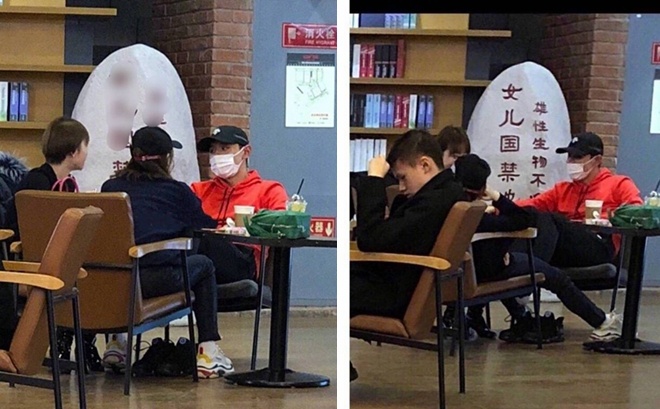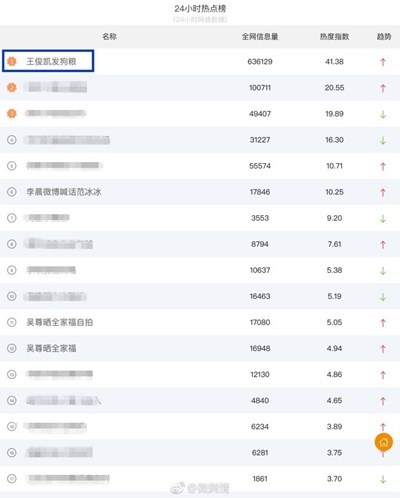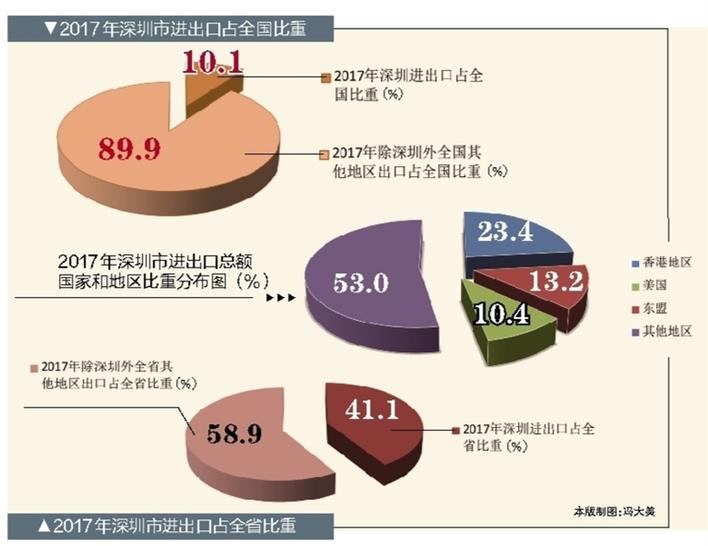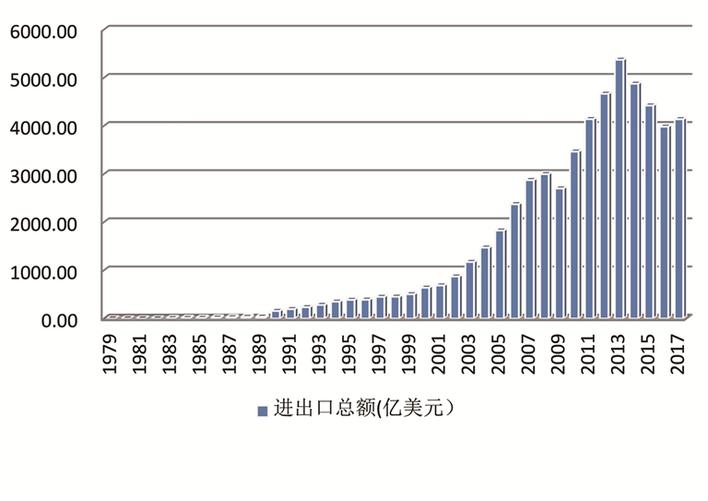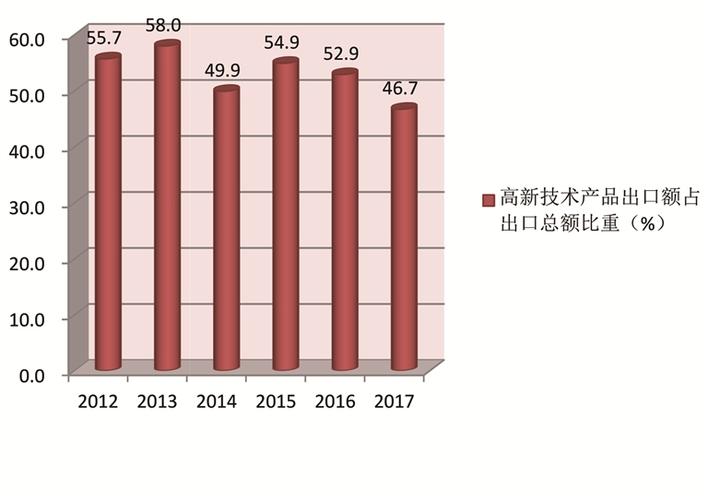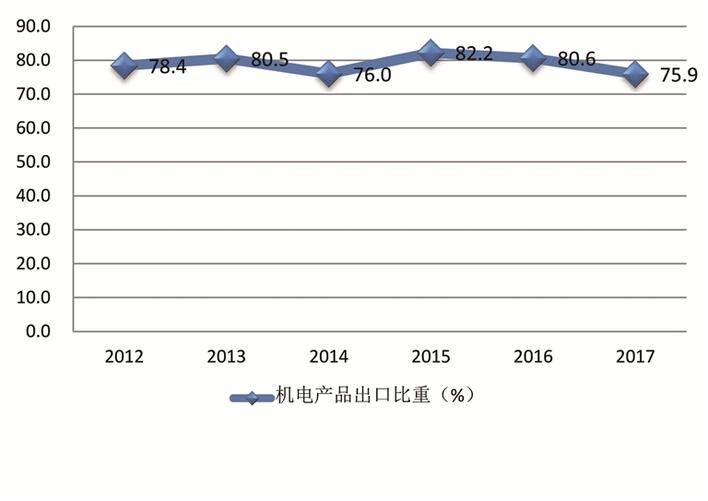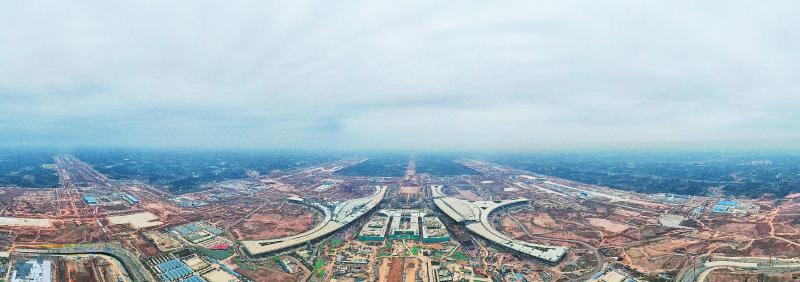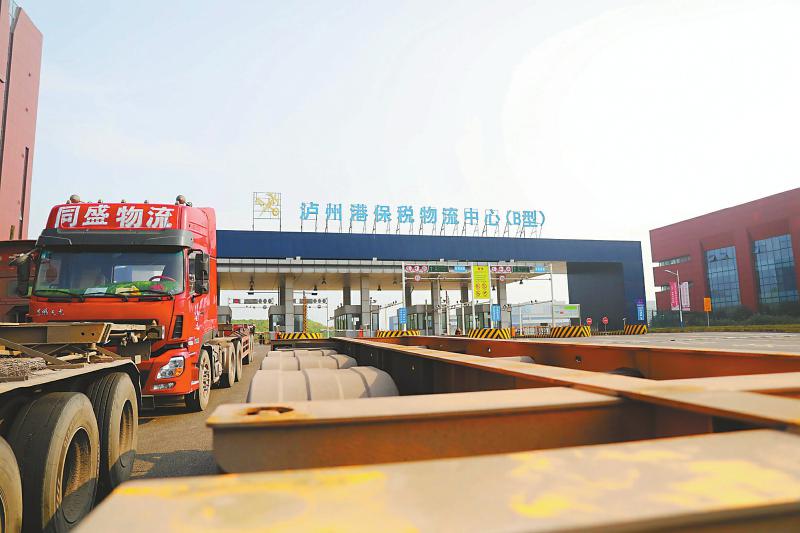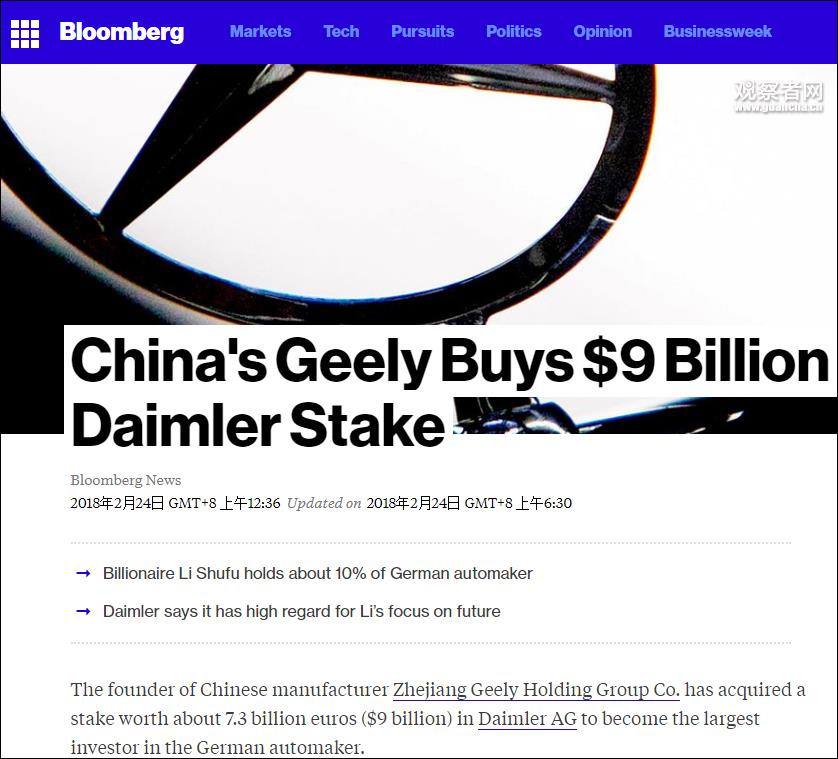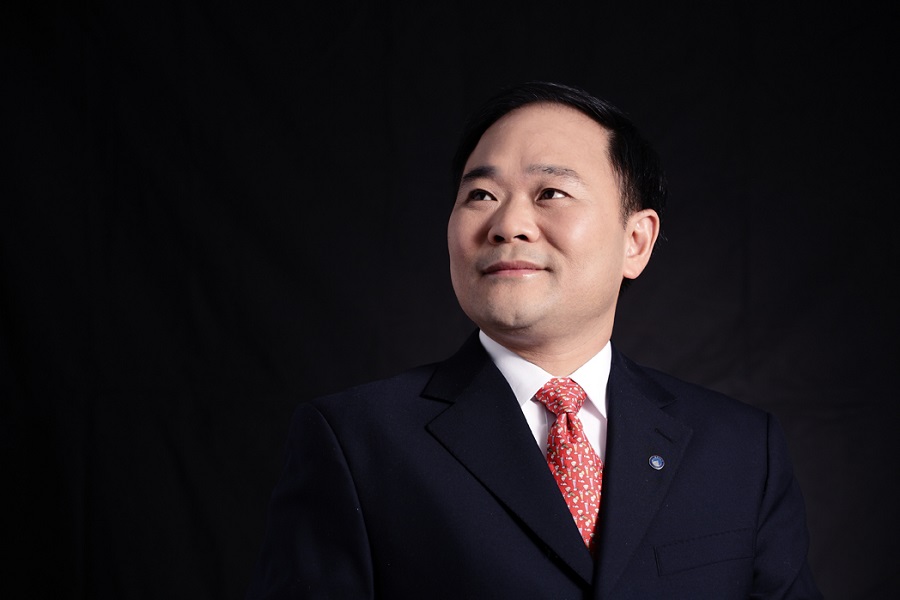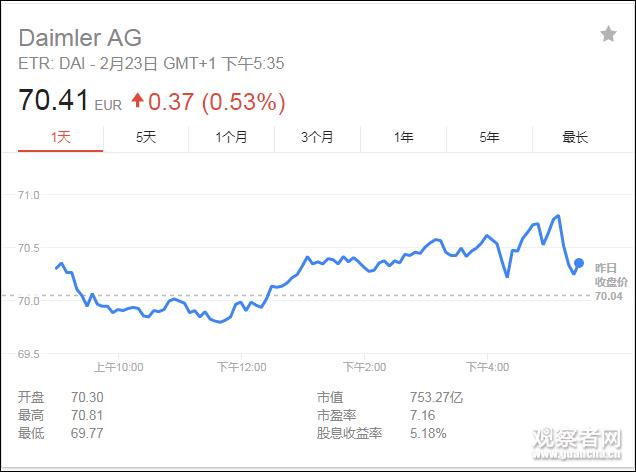■ Editor’s note:
The rapid development of the Internet plays an important and positive role in learning knowledge, leisure and social interaction for the majority of minors. At the same time, the proliferation of bad information on the Internet, online game addiction and other problems also seriously threaten the physical and mental health of minors. It is imperative to promote the legislation of network protection for minors and create a healthy, civilized and orderly network environment. However, the network protection of minors involves many legal subjects, and the understanding and demands of all parties are not completely consistent. On May 11th, a biweekly consultation forum was held in Chinese People’s Political Consultative Conference. The relevant speeches are summarized as follows:
Wang Yongqing, Vice Chairman of the National Committee of CPPCC made a keynote speech.
Legislators need to balance the relationship between government supervision and market mechanism, the relationship between government functions and enterprise rights, the relationship between family and society, and the relationship between short-term effects and long-term mechanisms. In this regard, I would like to make three suggestions:
First, clarify the application order of different legal norms. The network protection of minors involves complex legal relations and many actors, so it needs to be adjusted by various legal norms and the order of application can be determined in order to guide behavior and solve problems well. According to the principle of adjusting the priority of civil legal norms, in terms of legislative policy orientation, where private law means can be solved, public law means should not be adopted; Where technical means can be solved, try not to use administrative means; Where the family can play a role, try not to replace it with enterprises, governments and society; Where enterprises can do it, they should try not to blame the government. The government should take the responsibility of "setting rules, setting standards, emphasizing supervision and creating the environment". If the system determined by the legislation on minors’ network protection can reflect the legislative policy orientation and the application order of legal norms, it is possible for this legislation to better deal with the allocation of rights, obligations, responsibilities and authorities of different stakeholders, so that the system objectives determined by law are consistent and coordinated with each other, so that the system can play a good overall function.
Second, further strengthen the basic system design. Further efforts should be made to study and reflect the characteristics and laws of minors’ network protection, ensure the quality of legislation, ensure that legislation not only looks forward to the future, but also solves outstanding problems, and further strengthen the construction of basic systems. The problem of minors’ network protection arises from the development of internet technology, so the legislation of minors’ network protection can consider establishing an institutional framework based on technical means and supplemented by administrative policy means. In this framework, there are several basic system suggestions that should be paid attention to: First, the identification system of bad information and harmful information that minors can’t contact provides parents, enterprises, society and government departments with clear criteria for defining bad information and judging harmful information. The second is the supply system of special equipment and facilities. The third is to stipulate a selective curfew system and an online time reminder system. The fourth is to establish a restraint and incentive system for parents. The fifth is to establish a system to improve the network literacy of minors.
Third, build a scientific and reasonable supervision system. If the regulations are not clearly regulated and guided in the supervision system, it will be difficult to implement them in the end. At the same time, the protection of minors involves the responsibilities and authorities of many government departments. It is suggested that a management system and operation mechanism should be reasonably designed in legislation, in which one department is in charge, or one department is in charge, and multiple departments cooperate. On this basis, it is also suggested to establish a working mechanism for minors’ network protection, so as to facilitate information sharing, consultation and judgment, clue transfer and law enforcement cooperation among government departments, establish public participation mechanisms such as bad information reporting, social organizations and volunteer services, and form a benign pattern of government-led family, enterprises, schools and society participating and co-governing.
In addition, while giving full play to the regulatory role of government departments, we should also attach great importance to the role of professional social organizations, so that people with backgrounds such as psychology, information technology and social work can participate in them, find problems and propose solutions. Especially when minors are injured by the internet, they can provide help in time.
Zhang Zexi, member of the Standing Committee of Chinese People’s Political Consultative Conference, vice chairman of the Central Committee of the Taiwan Alliance and vice chairman of the Zhejiang Provincial Political Consultative Conference: Suggestions on improving the supervision system for minors’ network protection
At present, the prominent problem in the supervision system of minors’ network protection in China is that there are a wide range of departments involved in practice, but there is no special legislation to clarify the supervision system of minors’ network protection. Reflected in: First, in laws and regulations, the provisions on departmental responsibilities are scattered. Second, in the relevant policy documents, departmental responsibilities are also decentralized. Third, there is a problem that the boundary of responsibility is not clear in the practice of various departments.
In view of the above problems, three suggestions are put forward:
First, in the "Regulations" clearly lead the department, straighten out the supervision system of minors’ network protection. It is suggested that the reform of the party and state institutions should be taken as an opportunity to establish a special network supervision mechanism for minors within the existing network supervision pattern. It is clear that the network information department is the lead department of supervision, and the competent departments of education, telecommunications, public security and culture in the State Council should do relevant work according to their respective responsibilities. Clarify the allocation of powers and responsibilities between the central and local governments, deepen information sharing, consultation and judgment, clue transfer and law enforcement coordination among departments, and truly integrate functional departments, mass organizations and social forces.
Second, clearly refine the responsibilities of various departments. For example, the health authorities in the State Council can work with the education authorities in the State Council to study and formulate effective solutions to prevent and intervene minors’ internet addiction; The national network information department shall, jointly with the departments of culture, press and publication, radio and television in the State Council, determine the types and scope of information that may affect the physical and mental health of minors according to the needs of network protection of minors.
Third, in view of the problem that government departments are slow to perform their duties, it is suggested to increase the provisions of "prosecution and supervision". If a government department fails to perform its duties, its superior organ shall order it to make corrections; Refuses to correct or if the circumstances are serious, the directly responsible person in charge and other directly responsible personnel shall be punished according to law. Those involved in criminal offences shall be handed over to judicial organs for handling. In addition, a special supervision department can be set up to supervise the performance of each department.
Member Chinese People’s Political Consultative Conference and Minister of the Youth Rights and Interests Department of the Central Committee of the Communist Youth League Wang Feng: Strengthen the supervision of bad information about minors on the Internet.
Judging from the current situation, firstly, the concept and method of supervision can’t keep up with the technological update, secondly, the supervision standards are not well grasped, and thirdly, it is difficult for supervision to form a joint force. For the revision and perfection of the Regulations on the Protection of Minors’ Network, some suggestions are put forward:
First, further clarify the criteria for judging that minors are not suitable to contact information. The Regulation on the Protection of Minors’ Network (Draft for Review) puts forward the expression of "information unsuitable for minors to contact", which is indeed a bright spot, but the criteria for judging such information can be further clarified in the current regulations. This can further clarify the regulatory standards and solve the government’s law enforcement problems, and enterprises can also conduct more effective content audits accordingly, so as to minimize the occurrence of "edge ball" situations.
Second, control the source of bad information. It is clear that all Internet information and service providers have media attributes, and animation, games, videos, social platforms, etc. are not only entertainment consumption products, but also information content that guides users’ education. No organization or individual may make, publish or disseminate these bad information with minors as the audience or in network products and services specially serving minors. Network enterprises must strictly implement the system of "trial before delivery", reduce the recommendation of title party and vulgar content, and reduce the power of users who produce and forward bad information. Standardize the personalized recommendation algorithm with the help of big data to prevent pushing bad information to young users.
Three, strengthen the accountability of illegal enterprises. Refine legal responsibilities, and impose high-limit penalties on enterprises that fail to fulfill their audit obligations and let bad information spread. Through the strong deterrence of the Regulations on the Protection of Minors’ Network, enterprises realize that they must be cautious when it comes to minors’ information. There are minefields and restricted areas, and the era of relying on vulgar content for traffic and wandering the legal and moral edges is gone forever.
Member Chinese People’s Political Consultative Conference, member of the Standing Committee of the Central Committee of the Taiwan Alliance and Chairman of the Hubei Provincial Party Committee Jiang Liping: Give better play to the role of parents in protecting minors.
On the issue of minors’ network protection, parents’ confusion is mainly manifested in: first, neglect of discipline, second, lack of experience in management, third, rejection of the Internet and refusal of children to choose the Internet as a new occupation.
Parents are the first responsible person for the protection of minors, and the "hidden classroom" provided by parents’ words and deeds will be more effective than the "explicit classroom" in schools.
How to ensure that parents can perform the role of the first responsible person;
First, play the role of the family. Incorporate the network protection requirements for minors into the requirements for the construction of "civilized families", and give play to the grassroots role of neighborhood committees and village committees through activities such as the selection of civilized families and five good families, and specifically implement relevant indicators.
Second, play the role of the government. The government should take measures to deal with parents who fail to fulfill their obligations, organize public welfare publicity and training activities, and promote the improvement of parents and children’s online literacy. You can even give subsidies for network literacy education for parenting families, give material and spiritual rewards for exemplary performance of guardianship duties, and guide and promote parents’ initiative.
Third, through legislation, it not only regulates the main bodies of all parties, but also guides social concepts. Parents should take the initiative to learn network knowledge, educate and guide minors with healthy network use conduct and methods, and prevent and stop minors from committing bad network behaviors. Parents should also respect the rights of minors, inform and listen to their children’s opinions when making network-related decisions on their behalf. We can also refer to the foreign system of "compulsory reporting" and "deprivation of custody" to strengthen the role and function of parents.
Member Chinese People’s Political Consultative Conference, Mars, Vice President of Tianjin Higher People’s Court: Improve legal responsibility and increase punishment.
As criminal trial workers, we have always paid attention to the use of criminal means to protect minors. However, with the deep integration of online and offline, the criminal acts of using the Internet to infringe on the rights and interests of minors have become more complex, hidden and diversified. In addition to the traditional criminal means, it is necessary to further strengthen the protection of administrative means. In this regard, it is recommended that:
First, further increase the amount of fines in administrative punishment. Although the Regulations on the Protection of Minors’ Network (Draft for Review) has made 30,000 to 100,000, 5
It is suggested that the fine of 10,000 to 500,000 should be further raised and unified to 50,000 to 500,000 or even higher.
Second, further enrich the means of administrative law enforcement. In the process of Internet supervision, government departments gradually explore and form some supervision means and methods that conform to the law of Internet development, and play an active role in practice. It is suggested that the effective supervision system such as interview warning, regular inspection, joint punishment and credit management of black and gray list should be upgraded to the provisions of the Regulations on the Protection of Minors’ Network, so as to realize the legalization and proceduralization of law enforcement means.
Three, in the relevant legislation to consider the effective connection between administrative responsibility and criminal responsibility. At present, the Law on Public Security Administration Punishment is being revised, and the Law on the Protection of Minors should also be revised. It is suggested that the formulation of the Regulations on the Protection of Minors’ Network should be organically combined with the revision of the previous two laws, and overall consideration should be made to achieve scientific and effective convergence.
Member Chinese People’s Political Consultative Conference, Vice Chairman of Quanzhou CPPCC and Chairman of Quanzhou Association for Science and Technology Luo Shaming: Innovating "Three Societies Linkage" to Improve the Efficiency of Network Protection for Minors.
Network protection for minors is a systematic project of social governance, which needs community, social workers and social organizations to build, govern and share a win-win situation. Suggestion:
First, it is clear that the community should provide a healthy, safe and civilized public welfare network for minors, and combine unblocking and blocking to purify the subculture of the community network. Through the government’s purchase of services, psychological counseling rooms and community correction rooms for minors’ addiction to the Internet will be established in the community. Innovate community governance, give full play to the positive guiding role of community network celebrities, and social organizations and volunteers as social forces directly participate in public welfare projects for minors’ network protection.
Two, encourage social organizations to participate in the post supervision in advance of the Internet platform, and urge the enterprise platform to intercept and block all kinds of illegal and harmful information legally, legally and self-disciplined. Build a network security firewall, strengthen the online protection of minors and dynamically flatten law enforcement.
Third, industry associations should formulate industry standards for providing minors with network products with safety certification, risk assessment and installation of juvenile protection software, clearly list products and services unsuitable for minors, and guide members to strengthen network protection for minors.
Fourth, it is clear that legal aid will be given to the physical and mental victims of cyber bullying caused by minors, and social organizations will participate in relevant public interest litigation, and supervision and relief will be strengthened. Encourage lawyers’ associations and community lawyers to support the integrity file and blacklist system of enterprise legal persons established by relevant government departments.
Five, clear the Communist Youth League, the Women’s Federation, the Association for Science and Technology, universities and social organizations in educating and guiding minors’ correct values and helping the trapped minors, and enhance the comprehensive benefits of relevant technical supervision, legal supervision and social supervision.
Member Chinese People’s Political Consultative Conference, Chen Zhimin, former deputy minister of the Ministry of Public Security: Strengthen the crackdown on violations of minors’ rights and interests
At present, the network protection of minors in China is facing a very serious situation. According to the practice of investigating and handling cases for many years, it is found that the problems that infringe on the rights and interests of minors in the network environment are mainly the following four categories:
1. Endanger national security. Making, publishing and disseminating information endangering national security, sovereignty, honor and interests for minors.
Two, infringement of civil rights and interests of minors, including infringement of personal rights and property rights. The former collects personal information and privacy information of minors without consent, while the latter induces irrational consumption of minors such as large rewards by network anchors.
Third, acts suspected of criminal offences. For example, using the Internet to organize, induce and instigate minors to commit self-mutilation, suicide and other acts, as well as engaging in child trafficking, are suspected of criminal offences.
Fourth, there are still omissions in administrative supervision. The main reason is that our current laws are universal, and there is no clear regulation on the protection of minors. Internet companies also have no grading restrictions on age according to information content, so it is difficult for law enforcement departments to conduct targeted supervision.
The above behaviors are still developing and changing, and new types and forms will appear. In order to avoid the situation that cannot be relied upon, it is suggested to further study the above behaviors, so as to make the regulations more targeted, operational and effective, and to make the regulations more binding and deterrent.
Member Chinese People’s Political Consultative Conference, Vice President all china lawyers association, Director and Managing Partner Zhu Zhengfu of Guangdong Oriental Kunlun Law Firm: It is suggested that the age standard for minors with the consent of guardians should be set at 14 years old.
Focusing on the relevant provisions on the protection of minors’ personal information in the Regulations on the Protection of Minors’ Network (Draft for Review), the following suggestions are put forward:
First, it is suggested that the age standard for minors’ personal information to require the consent of their guardians be set at 14 years old. From the experience at home and abroad, the main system of special protection for minors’ personal information is the guardian’s consent system for collecting minors’ personal information. The Regulations on the Protection of Minors’ Network (Draft for Review) has similar provisions, but all of them are determined to be 18 years old. It is suggested to subdivide them according to the civil capacity of minors of different ages. Although the age standards for parents’ consent to collect personal information of minors in different countries are different, they are all lower than their standards for identifying minors. The national recommended technical standard "Personal Information Security Standard", which came into effect on May 1, is also 14 years old. Therefore, minors over the age of 14, who are physically and mentally mature, have the right to decide whether to consent to the collection of their personal information by others without parental consent.
Second, reasonably distinguish the applicable objects of the guardian consent system in combination with practice. For online service providers specifically for children, it is necessary to obtain the explicit consent of the guardian. For general websites, it is moderately relaxed, and more guardians take the initiative to take responsibility.
Member Chinese People’s Political Consultative Conference, Assistant Director peking university health science center and Director of the Department of Health Policy and Management Wu Ming: The correction of Internet addiction needs to be standardized.
From a medical point of view, there are the following problems in Internet addiction treatment: First, the nature of Internet addiction treatment institutions is complex, and the examination and approval departments are numerous and unclear. Second, the admission conditions of correction institutions, the criteria for judging Internet addiction and the indications for income correction institutions are not clear. Third, there is a regulatory gap in the qualifications of correctional institutions and the corrective methods adopted. In this regard, it is recommended that:
First, the government should increase investment in research and promote relevant research. On this basis, as soon as possible, put forward the admission standards of correction institutions, the evaluation methods and judgment standards of Internet addiction, and the norms of correction methods, so as to clarify the conditions that correction institutions should have and standardize the standards and correction measures for entering correction institutions.
Two, clear the competent departments of all kinds of correction institutions, all correction institutions need to be approved by the competent authorities, in order to carry out correction within the prescribed scope.
Three, the establishment of a comprehensive prevention and control mechanism, the relevant government departments to strengthen the supervision of correctional institutions.
4. Paragraph 2 of Article 20 of the Regulations on the Protection of Minors’ Internet (Draft for Review), "People’s governments at or above the county level and their education administrative departments should equip primary and secondary schools with specialized teachers or improve their professional level, enhance their ability to identify and intervene minors’ Internet addiction at an early stage, and provide education or services to prevent and intervene minors’ Internet addiction by purchasing services" should be an independent article, and it should be supplemented that correction institutions must be approved before they can carry out correction within the prescribed scope, and adopt medical treatment without qualification, beyond the scope, especially without authorization.
Member Chinese People’s Political Consultative Conference and Vice Chairman of Guangdong Provincial Political Consultative Conference Zhang Jiaji: Internet companies should be encouraged to take the initiative to assume social responsibilities.
How should the three subjects "parents, enterprises and government" bear the responsibility for the network protection of minors? I think:
First, it is difficult for parents to bear the main responsibility of network protection for minors. As we all know, minors are "Internet aborigines", while parents are "Internet immigrants", so they lack the mastery of network technology. In addition, many parents of rural children go to work in cities. If too many responsibilities are given to parents, it will be difficult to implement them.
Second, enterprises are operators, manufacturers and providers of network products, and they are also strong in network technology. Enterprises must have social responsibilities.
Third, network technology is an enterprise technology that should be encouraged to develop. The main responsibility should be placed on enterprises, not to crack down on enterprises, but to encourage enterprises to research and develop network products and services suitable for minors’ physical and mental health, explore new technologies and means for minors’ network protection, and formulate enterprise standards that are stricter than the law. In the Regulations on the Protection of Minors’ Network, enterprises that operate legally and can provide positive network products and services should be rewarded with honors, policies, funds and taxes, and more space should be provided for the rewards.
Fourth, the government’s supervision is duty-bound. Therefore, the "Regulations on the Protection of Minors’ Network" should attach importance to strengthening the government’s responsibility and accountability, and clarify the competent lead unit and the corresponding coordination mechanism.
Member Chinese People’s Political Consultative Conference, CEO of Venus Star Information Technology Group Co., Ltd. Yan Wangjia: Using technical protection means to create a healthy network environment.
Make some suggestions:
1. It is suggested to study and refer to the EU’s General Data Protection Regulations, which will be formally implemented on May 25th this year, and expand the application scope of the Regulations on the Protection of Minors’ Network. It is suggested that no matter whether the enterprise is located at home or abroad and what kind of network services it provides, as long as the user group contains minor citizens in China, it must abide by the provisions of the Regulations on the Protection of Minors’ Networks.
Second, it is suggested that network information service providers should adopt big data technology to accurately portray the network behavior of minors. After accurate portrait, harmful information can’t be pushed, but it is necessary to predict the potential network addicted user group, notify relevant parents, guardians or regulatory authorities, and make early warning and intervention.
Third, it is suggested to set up a cloud platform to evaluate the network usage of minors, requiring enterprises that provide network information services to minors to regularly report the network usage of minors to the cloud platform after desensitizing the necessary data, including statistical information such as duration and frequency. Through this cloud platform, regulators can establish a long-term mechanism for data collection to provide support for scientific decision-making.
Member Chinese People’s Political Consultative Conference, Vice Chairman of Guangzhou CPPCC and Vice President of Guangzhou University Yu Xinwei: Strictly control the source of technology and strengthen the management of online games.
Now I would like to make some suggestions on strengthening the management of online games:
First, the positive role of online game curfew system can not be ignored. The Regulations on the Network Protection of Minors (Draft for Review) clearly stipulates: "Online game enterprises shall not provide online game services to minors from 0: 00 to 8: 00 every day." This is the "game curfew system". There were also some controversies in the previous public consultation. Some opponents thought that this was unscientific, uniform, easy to evade, and easy to cause rebellion among teenagers. At present, there is similar legislation in South Korea, which is really controversial and the effect is not very satisfactory. The curfew system is a very important link in the game management chain, and it is very important to ensure the normal rest of minors. Of course, the real landing may be closely related to real-name registration system and effective measures for identification.
Second, formulate norms and standards for healthy online games classified by age and content as soon as possible, and strictly control the source from the technical level. It is suggested to add a system of graded operation and management of websites, online video programs and online games in the regulations, and there should be some principled opinions. In addition, the departmental rules of the online game operation management department should be formulated as soon as possible, and some contents can be refined. Classification standardization and management, classification on the basis of content review, and truly realize classification guidance and classification operation.
Third, cancel all the rules of the game that use the weakness of human nature to bind the player’s will. There are strict restrictions and requirements in some rules of the game, especially for the issuance of virtual currency in the game.
Member Chinese People’s Political Consultative Conference, vice chairman of Liaoning Chaoyang CPPCC, Xing Jihua, deputy procurator-general of Chaoyang Procuratorate: Pay attention to the network literacy of all parties and build a three-dimensional protection system.
From the perspective of grassroots judicial work, we hope to pay more attention to cracking down on the perpetrators and cleaning up the external conditions and environment, but sometimes we ignore the improvement of the victims’ own ability. There are two points in this: First, can the technology or management guarantee that minors are not exposed to bad information and are not infringed by bad information? Because cyberspace is an open space, especially the push of some information does not need to be checked and there is no relevant review. Since contact with bad information cannot be completely avoided, it is an inevitable choice to improve the network literacy of minors themselves in order to protect minors from infringement. Second, schools and parents should bear the responsibility of guardianship, including supervision and education. At present, more attention is paid to supervision, but education is more fundamental and effective. In this regard, it is recommended that:
First, give play to the educational role of the main channel, and incorporate network literacy education into the compulsory education curriculum and the teaching examination syllabus.
Second, parents should be encouraged to receive network literacy education, and the society and the government should bear some responsibilities and provide necessary training for parents.
Third, as an advocacy clause, the construction of network morality can also be written into the regulations. For example, primary code, village rules and regulations, including the ethics of some enterprises and industries, can incorporate the requirements of network literacy.
Member Chinese People’s Political Consultative Conference, President of Beijing No.12 Middle School Li Youyi: Give full play to the role of education departments and schools in the network protection of minors.
In the network protection of minors, education departments and schools have great responsibilities. It is suggested that the obligations of education departments and schools should be further clarified in the Regulations on the Protection of Minors’ Network.
It is suggested that the legal obligations of the education department include: first, according to the law of physical and mental development of minors and the staged characteristics of online life, give priority to education guidance, guide primary and secondary school students to surf the Internet in a green and civilized way, and support them with special funds. The second is to construct an integrated network media literacy system for primary and secondary schools. The third is to strengthen the construction of public cultural facilities for public welfare online services. The fourth is to find out the network violations involving primary and secondary school students, report to the local cultural tourism, public security, network information and other departments in time, and take rectification measures with relevant departments.
It is suggested that the statutory obligations of schools include:
First, primary and secondary schools should bring the online media literacy of minors into the core literacy category of students’ development and cultivate it, and bring it into the daily work, annual work and development planning of the school. Second, primary and secondary schools should establish a home-school cooperation mechanism for network protection of minors. Third, primary and secondary schools should set up off-campus classes and other ways to guide minors’ guardians to learn network knowledge, improve network literacy, and enhance their ability to educate and guide minors to use the network correctly. Fourth, primary and secondary schools should establish an early warning and reporting system for minors’ cyber security, and regularly report all kinds of security problems found in minors’ cyber life, such as internet addiction, cyber bullying, cyber pornography, cyber violence, cyber fraud, cyber reactionary and terrorist remarks, to the education administrative department so as to analyze, guide and solve them in time.
Member Chinese People’s Political Consultative Conference, Peng Jing, the chief lawyer of Chongqing Jingsheng Law Firm: Perfection of the reporting mechanism of illegal and bad information of minors on the Internet.
Although the Regulations on the Protection of Minors’ Network (Draft for Review) stipulates the network reporting system, there are still some problems: First, the reporting operation is not strong; Second, the reporting channels are not smooth. In this regard, it is recommended that:
First, establish a unified reporting platform and achieve departmental linkage. In 2005, the China Internet Illegal and Bad Information Reporting Center was established, which has been running effectively for many years. It is suggested that the relevant state authorities should build a unified national reporting platform based on it, and require relevant Internet companies to actively access the platform to share reporting information and establish a reporting linkage mechanism.
Second, establish a convenient and efficient reporting procedure. The "prominent way" in "the network information service provider publicizes the reporting ways and methods in a prominent way" can be further refined, similar to "on the homepage of the website" and "at the top of the APP".
Third, improve the reporting responsibility regulations. Provisions on the responsibilities of relevant government departments can be added. If the departments of network information, culture, press and publication, radio and television fail to establish a reporting system or fail to accept and dispose of reports in time, the higher authorities shall order them to make corrections, and if they refuse to make corrections or the circumstances are serious, the directly responsible person in charge and other directly responsible personnel shall be punished according to law.
Four, increase the reporting security system and the restrictive provisions of malicious reporting. The first is the confidentiality of reporting. The second is to improve the incentive mechanism for reporting. Finally, the behavior of "malicious reporting" is strictly regulated. If the network information service provider has evidence to prove that the whistleblower is malicious or untrue, the legal responsibility of the whistleblower can be investigated according to law.
Guo Kaitian, Senior Vice President of Tencent: Fulfilling Corporate Responsibility and Doing a Good Job in Network Protection for Minors.
Network protection of minors needs the participation of many subjects. At present, there are phenomena such as unbalanced regional development in China, and the left-behind children groups caused by migrant workers are obviously absent from their guardians. However, it is easy to be bypassed by only emphasizing technical measures such as real-name authentication and anti-addiction. The Regulations on the Protection of Minors’ Network strengthens the concept of "holism" and emphasizes the educational obligations of schools and parents, and the cooperation of the government and enterprises is a highlight.
As far as Tencent is concerned, whether it is involved in formulating laws and policies, improving industry standards, or developing technical prevention and control capabilities, it is willing to do its part. Talk about two specific opinions:
First, it is suggested to treat online games objectively and provide legal protection for the development of functional games. In addition to entertainment games, functional games integrate the gamification concept in education, medical care, management and other industries. Therefore, I hope to comprehensively evaluate the role of online games, increase encouraging regulations for functional games, and open up a green channel for the approval of their version numbers.
Second, it is suggested that the network short video service should be clearly regulated in legislation. Recently, all kinds of short live video platforms rely on algorithms to speculate on users’ preferences, spread bad information about minors’ pornography, violence, vulgarity and so on, and induce imitation, which makes people deeply involved. The national network information office and other departments severely punished them according to law, and public opinion reacted strongly. It is necessary to supervise the types of network products that may infringe on minors in the Insurance Regulations.
Zhou Hanhua, Vice President of china law society Network and Information Law Research Association and Assistant Director of the Institute of Law of Chinese Academy of Social Sciences: Suggestions on the legislative orientation of the Regulations on the Protection of Minors’ Network.
It is very important to deal with the positioning of Internet information content management and personal information protection in the regulations and highlight the key points of legislation, which can not only avoid duplication and overlapping of legislation, but also make full use of legislative resources to solve the outstanding problems faced by the protection of minors under the network environment.
For example, Article 7, paragraph 2, of the Regulations on the Network Protection of Minors (Draft for Review) stipulates that "if a network information service provider provides network platform services, it shall review the information it publishes; If information that violates laws, administrative regulations and departmental rules is found, measures shall be taken to filter, delete or block it, and report to the relevant competent authorities. " However, Article 47 of the Cyber Security Law stipulates that "network operators should strengthen the management of information released by their users, and if they find information prohibited by laws and administrative regulations from being released or transmitted, they should immediately stop transmitting the information, take measures such as elimination, prevent information from spreading, keep relevant records, and report to the relevant competent departments". Neither the Cyber Security Law nor the decision on the protection of network information in the National People’s Congress Standing Committee (NPCSC) stipulates the general censorship obligation. The Regulation on the Protection of Minors’ Network (Draft for Review) changes "management" to "conduct censorship", which is inconsistent with the provisions of the law; In addition, the Regulation on the Protection of Minors’ Network (Draft for Review) uses the expression of "filtering, deleting or shielding" instead of "eliminating and other disposal measures", omitting the provisions of "immediately stopping the transmission of this information" and "preventing the spread of information", which may lead to inconsistent understanding.
It is suggested that the regulations further clarify the legislative orientation and focus on outstanding issues such as fair use of the Internet by minors and prevention of Internet addiction. If it is really necessary to keep the contents of internet information content management and personal information protection of minors, we should handle the relationship with relevant legislation and avoid provisions inconsistent with the existing legislation.
Briefing of ministries and commissions and on-site response
Yuan Shuhong, Party Secretary and Vice Minister of the Ministry of Justice:
While the Internet has effectively expanded the study and living space of minors, there have also been some problems that need to be solved urgently, such as minors’ addiction to online games, exposure to a large number of information content that affects their physical and mental health, and abuse of personal information.
The National Internet Information Office drafted the Regulations on Network Protection for Minors (Draft for Review), which was submitted to the State Council for deliberation in November 2016. After receiving the manuscript, we submitted it to the leading comrades of the State Council for approval, and in January 2017, we publicly solicited opinions from the public on the Legal Information Network of China Government. All sectors of society generally believe that it is necessary to protect the legitimate rights and interests of minors through legislation. At the same time, the relevant parties have also put forward some questions and opinions on the content of the draft: the relevant system is not targeted enough; The text structure needs to be optimized; The main responsibilities of all parties need to be clear; Measures to prevent internet addiction need to be refined; The punishment should be increased.
Together with the National Internet Information Office, we have studied the opinions from all sides one by one. We believe that we should focus on the following points in the overall thinking of legislative review and revision: First, we should give priority to prevention and protection. Fully protect minors’ online rights, educate and guide minors to learn network knowledge, improve network literacy, use the network correctly, and effectively protect the legitimate rights and interests of minors. The second is to clarify the responsibilities of all parties and implement social co-governance. Clarify the responsibilities of relevant government departments, enterprises, schools, families, industry organizations, news media and other subjects, and form a pattern of social co-governance of minors’ network protection. Third, we should pay equal attention to standardizing network service behavior and promoting the development of network industry. When clarifying and strengthening the responsibility of Internet enterprises, we should adhere to the principle of both necessity and feasibility, which not only urges enterprises to fulfill their social responsibilities, but also does not excessively increase the burden on enterprises, and pay attention to guiding Internet enterprises to continuously improve their management systems. The fourth is to handle the relationship between regulations and relevant laws and regulations. It is not only well connected with the law on the protection of minors, the network security law, etc., but also absorbs more mature practical experience into the regulations in time.
We are deepening and perfecting the problems in the network protection of minors and the solutions to them. In response to the opinions and suggestions of members and experts, the Ministry of Justice will carefully make records, study them one by one, further revise and improve the regulations, and step up the legislative process.
Yang Xiaowei, Deputy Director of the Central Network Information Office:
Just now, after listening to the opinions and suggestions of experts from all members, I was deeply inspired and deeply responsible. As the lead department in drafting the Regulations on the Protection of Minors’ Network, we will carefully sort out your opinions and further study and improve them with relevant departments.
For most of the questions raised by everyone, we have carefully studied them in the legislative process and made corresponding system designs. However, the protection of minors’ network is a wide-ranging and comprehensive work, which involves the responsibilities of many administrative departments. How to coordinate the opinions of various departments is also an important issue we face in the drafting process.
The cases mentioned by everyone, such as the "blue whale incident" and "children’s cult films", have aroused great concern in the whole society. Strengthening the protection of minors in cyberspace has become the common appeal and expectation of the whole society, and it has also become a key problem to be solved by the Central Network Information Office. But at the same time, because the network protection of minors involves family, school, society, government, enterprises and other aspects, even if the goals are the same, because everyone has different perspectives, opinions are often inconsistent. For example, regarding the correction of minors’ addiction to online games, some parents think it is really necessary to take all means to correct them, otherwise the children can’t be saved; However, other parents are worried about setting up an Internet addiction correction institution. In view of the lack of clear medical standards to classify and identify them at present, we have made a provision that "no organization or individual may interfere with minors’ activities of indulging in games through illegal means such as abuse and coercion" from the perspective of grasping the main contradictions. The design of this system also provides a space for law enforcement departments to further carry out relevant management work.
In the next step, we will actively study and adopt your suggestions, cooperate with the Ministry of Justice to organize relevant legislative research activities, further improve the contents of the Regulations on the Protection of Minors’ Network (Draft for Review) on the basis of fully absorbing opinions from all sides, and promote the legislative process of the Regulations on the Protection of Minors’ Network.
Zhu Zhiwen, member of the Party Group and Vice Minister of the Ministry of Education:
It is of great significance and far-reaching influence to study and formulate the Regulations on the Network Protection of Minors, strengthen the network protection of minors according to law, and prevent and correct improper network behavior of minors. The following is a brief response to the questions and suggestions raised by the members:
First, on strengthening the cultivation of integrated network media literacy in primary and secondary schools. The Ministry of Education attaches great importance to the education of network security knowledge, pays attention to giving full play to the role of classroom as the main channel, and incorporates the education of network security knowledge into the curriculum contents of morality and rule of law, information technology and comprehensive practical activities in primary and secondary schools. In the next step, experts will be organized to conduct in-depth research and promote the construction of an integrated network literacy training system for primary and secondary schools.
Two, about the role of education departments and schools in the network protection of minors. The Ministry of Education requires all localities to put the network protection of minors in a more prominent position, focus on strengthening the daily management of rural schools and boarding schools, guide schools to strengthen the content management of campus networks, and build a campus green grid. All primary and secondary schools are required to clarify the educational responsibilities of the staff in each position, strengthen the management at noon and after class, standardize students’ use of mobile phones, pay attention to the organizational role of school groups and teams, and incorporate the prevention of students’ addiction to the Internet into the content of education supervision.
Three, on the construction of school minors network security early warning and reporting system. Recently, we deployed schools around the country to organize a comprehensive investigation to understand the basic situation of primary and secondary school students using the Internet, focusing on the investigation of students’ addiction to games and other issues. In the next step, the Ministry of Education will promote local research and formulate relevant measures to promote the institutionalization and normalization of early warning and reporting of cyber security for minors.
Four, on the establishment of network protection of minors home-school cooperation mechanism. The Ministry of Education requires all local schools to remind every parent to take the responsibility of supervising their children and help them improve their network literacy through home visits, parent meetings, parent schools and other forms. On how to prevent students from indulging in the Internet, the Ministry of Education also issued a letter to parents of primary and secondary school students nationwide, calling on and demanding that every family fulfill their responsibilities.
In the future work, we will deeply study the opinions and suggestions of the Committee members, learn from them when studying and formulating relevant policies, and actively work with relevant departments to jointly do a good job in the network protection of minors.
Chen Zhaoxiong, member of the Party Group and Vice Minister of the Ministry of Industry and Information Technology:
It is very important, necessary and urgent to formulate the Regulations on the Protection of Minors’ Network. After listening to the opinions and suggestions of members and representatives, I was very inspired. Here are three aspects of the responsibilities of the Ministry of Industry and Information Technology:
First, the problem of installing network protection software on intelligent terminal equipment. Just now, many members suggested installing internet security software and formulating relevant industry standards. In the early stage, the Ministry of Industry and Information Technology organized Huawei and other enterprises to make some attempts, with good results. The next step will be to strengthen the formulation of standards and gradually promote them nationwide, forming a situation in which the government, enterprises and society jointly promote them.
Second, on urging the website to implement the responsibility of protecting minors. Several members suggested strengthening website supervision, implementing corporate responsibility, improving reporting channels and strengthening accountability for violations. In the early stage, according to the requirements of the cyber security law, we comprehensively used access permission, social supervision and administrative punishment to urge all kinds of enterprises to implement relevant legal responsibilities. In the next step, the Ministry of Industry and Information Technology will further strengthen the supervision of the industry, especially the construction of technical means, in order to realize the rule of the network by the network.
Three, about the protection of personal information of minors. Several members suggested that the protection of minors’ personal information should be strengthened, the legal requirements and management regulations for the collection and use should be further clarified, and a monitoring platform for minors’ online information should be established. In the next step, we will further strengthen policy guidance and strengthen supervision and inspection based on the characteristics of information protection for minors. At the same time, the feasibility of monitoring platform construction is studied.
In the next step, we will seriously study and fully absorb the opinions of members and experts, and do a good job in implementing the spirit of this meeting.
Selected speeches of members attending the biweekly consultation forum
Member Chinese People’s Political Consultative Conference, Director of Language Institute of China Academy of Social Sciences, Wang Canlong:
It is urgent to formulate and promulgate a perfect law, clarify the responsibilities and rights of parents, schools and relevant government departments, standardize the business behaviors of Internet companies and online game companies, and create a healthy, beneficial and safe cyberspace and environment for minors.
Member Chinese People’s Political Consultative Conference, actor Liu Yuwan of China Oriental Performing Arts Group Co., Ltd.:
It is suggested that the online game market should be strictly regulated and the problems of minors indulging in online games should be solved. I hope to reach a consensus as soon as possible, actively promote network laws and regulations to protect minors, further improve the supervision project for minors’ parents, promote the parental guardian platform, and strengthen parental responsibility. Promote enterprise self-discipline, encourage social supervision, strengthen credit management, blacklist illegal enterprises in time, and implement joint punishment.
Member Chinese People’s Political Consultative Conference, President of the First Court of Civil Trial of Tongzhou District People’s Court, Li Yingxin:
Because of the unlimited information and humanized interaction of the network, the advantages are self-evident. Compared with the traditional social form, the Internet can make up for many shortcomings of the real society and greatly expand the vision of minors and Social circle. But it gives minors the same strength as adults, but not the same wisdom. The network has the characteristics of a global resource market, and there are bound to be mixed phenomena, and there are undoubtedly hidden dangers for minors to participate in online communication. It is imperative to promote the legislation of network protection for minors and create a healthy, civilized and orderly network environment.
Member Chinese People’s Political Consultative Conference, Vice President of the Central Committee of the Communist Party of China Institute of Party History and Literature, Wu Degang:
Because the network protection of minors is a complex social system project, involving many legal subjects, first, we must adhere to systematic thinking and comprehensive policies, and we must not treat the symptoms and feet; Second, we must grasp the main contradictions and highlight the key points; Third, we must adhere to the problem orientation, and solve what problems are outstanding first; Fourth, efforts should be made to establish and improve the working mechanism of minors’ network protection, with the government leading, family enterprises, schools and society participating together and making concerted efforts.
Member Chinese People’s Political Consultative Conference, Director of Institute of Contemporary Studies, China Academy of Social Sciences, Zhang Shunhong:
At present, there are many problems in the Internet, such as vulgarity, violence, pornography and other junk information, which is shocking and extremely harmful to the majority of young people, and it is urgent to strengthen governance. Criminals and unscrupulous businesses must do everything possible to make use of the internet to make harm to the world and must be severely cracked down. We must not treat the internet lightly, which is related to the national spirit and the long-term stability of the country.
Member Chinese People’s Political Consultative Conference, Chen Hongyan, Deputy Director of the National Library of Ancient Books:
On the one hand, the rapid development of the Internet is beneficial to minors’ learning and communication; on the other hand, not only negative information and online games threaten minors’ physical and mental health, but also primary school students spend too much time doing their homework with APP, resulting in a sharp decline in their eyesight and an impact on their physical development. It will also hinder students’ grasp of Chinese characters, and so on. When legislating, we should also clearly restrict guardians and school work methods. At the same time, it is advisable to develop useful game software and provide positive guidance, such as the 30-minute parent-child China Poetry Competition.
Member Chinese People’s Political Consultative Conference, inspector of international department of China Disabled Persons’ Federation, Wei Fei, executive vice president and secretary general of China Lions Association:
I hope that in the detailed rules, the responsibilities of all parties to "social co-governance" can be clearly defined. I am most concerned about two important responsible parties: parents and schools. In the existing system, the effective interaction between parents and schools is insufficient. Parents are the most important force to cultivate excellent citizens. Parents’ information is fragmented, and schools can become an important platform to help parents educate their children.
It is suggested that schools should be required to open "parent classes" and establish "parent schools" when the "Regulations on the Protection of Minors’ Network" is formulated, and the services of specialized social organizations can be purchased, which can also promote the development of relevant social organizations. I hope that "helping parents" will become an important part of this regulation to strengthen basic design.
Member Chinese People’s Political Consultative Conference, Vice Chairman and Secretary of the Secretariat of the 11th China Women’s Federation Cui Yu:
The meeting does not shy away from the problem, the research ideas are highly targeted, the legislative principles are accurate, and the path to solve the problem is clear. It can be said that this is the attitude that must be held in the new era of network.
The Regulations on the Protection of Minors’ Network clarifies that the State Council and local governments should regard the protection of minors’ network as an important part of the protection of minors, and education, public security, industry and commerce departments should carry out the protection of minors’ network according to their respective responsibilities. In particular, the Communist Youth League, women’s federations and other organizations can also assist relevant departments in the protection of minors.







